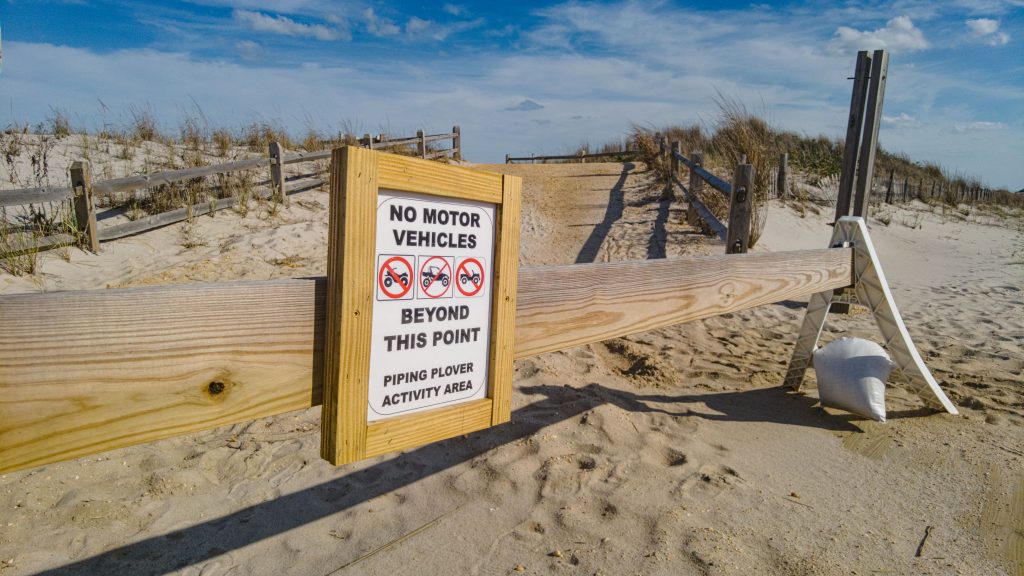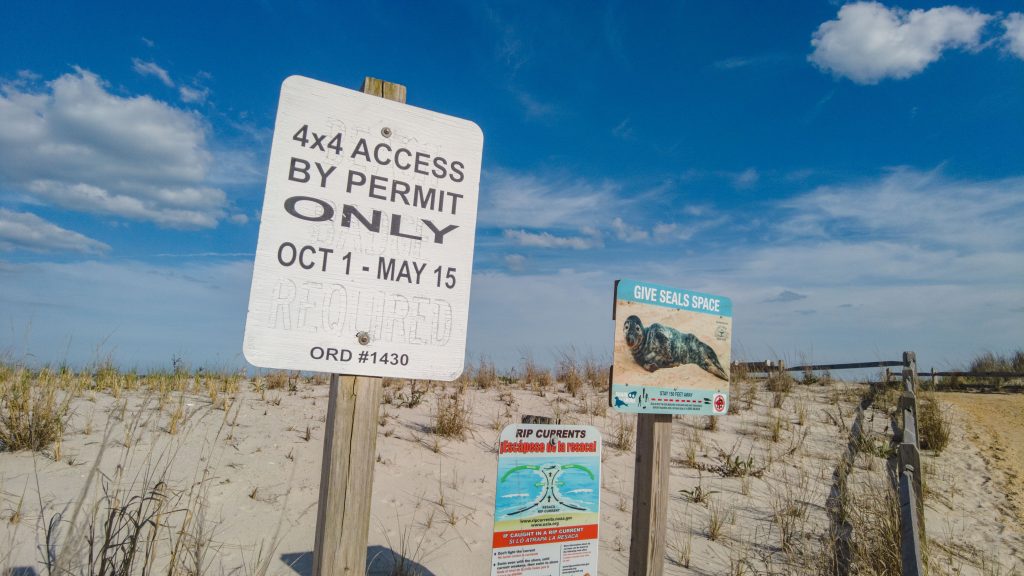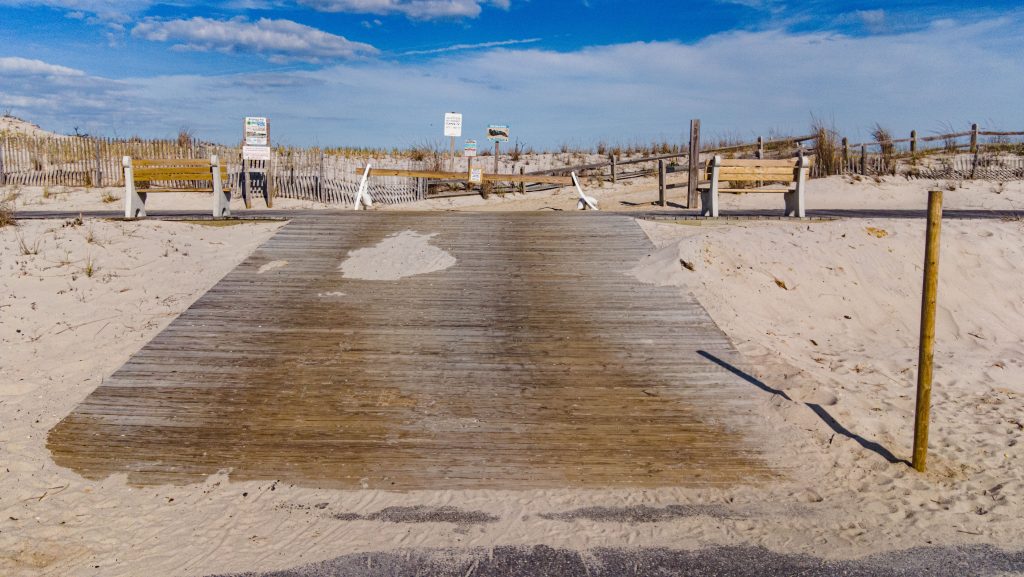
Beach buggy access is blocked at the Brighton Avenue entrance, Seaside Park, N.J., April 18, 2023. (Photo: Daniel Nee)
With almost a month of “beach buggy season” remaining in Seaside Park, four-wheel drive vehicle owners looking to catch the spring surf fishing run will not be able to access the sand with their vehicles.
In a scenario that has some similarities to a scenario encountered by Brick Township last year, the U.S. Fish and Wildlife Service has effectively ordered access to be cut off to beach buggy owners due to the alleged presence of two species: the piping plover, considered a threatened shorebird species, and a grass known as seabeach amaranth, the presence of which has sometimes been questioned by local officials.
A barrier was placed at the entrance to the Brighton Avenue beach last week and the borough stopped selling beach buggy permits. As it currently stands, beach buggies are allowed access to the Seaside Park oceanfront from Oct. 1 through May 16 every year.
“As we speak, we don’t have a formally-adopted beach management plan, but we have submitted a comprehensive draft beach management plan,” explained Mayor John Peterson, adding that the state Department of Environmental Protection was enforcing the federal request.
Last year, Brick Township officials received a similar order asking the township to develop a management plan, but made wide-reaching requests to prohibit vehicles for a longer period of time each year and in more physical areas of the beachfront. The township ultimately adopted a plan, though recreational fishing advocates at the time held that a non-governmental environmental group subcontracted by Fish and Wildlife were responsible for the beach buggy requests rather than the federal agency itself. After Brick officials engaged directly with Fish and Wildlife, a management plan was developed and adopted that largely maintained the status quo in terms of beach buggy access. The question of the where the request for beach buggy restrictions actually originated was never resolved publicly.

Beach buggy access is blocked at the Brighton Avenue entrance, Seaside Park, N.J., April 18, 2023. (Photo: Daniel Nee)

Beach buggy access is blocked at the Brighton Avenue entrance, Seaside Park, N.J., April 18, 2023. (Photo: Daniel Nee)
Peterson said the request from Fish and Wildlife to Seaside Park also sought to curtail beach buggy access, both in time and location.
“The timeframe is more extensive than we would have liked, and which we have currently in the ordinances,” said Peterson. “We are talking with them on that, but in the mean time, it’s effectively so strict from the DEP’s standpoint that when you go north of Brighton [Avenue], you can’t have any kind of vehicle at all. It effectively stopped it, but we’re hoping to have something in place by the mid-fall.”
“It’s a delicate situation because we want to protect the endangered species, but at the same time, as best possible, you want to allow traditional beach recreational activities,” Peterson continued. “Among them, of course, have been the beach buggies on the low beach.”
The mayor said part of the beach management plan the borough is developing includes language that prohibits beach buggies from accessing the upper portion of the beach – a rarity since beach buggy access is reserved for fishing only – and a guarantee that the borough’s police department can effectively enforce whatever regulations are ultimately set by local ordinance to comply with the federal and state codes.
Seaside Park’s record, Peterson said, speaks for itself in terms of how the borough has managed the each environment in the past.
“We were applauded last year by Fish and Wildlife,” he said. “I think we were one of the only towns that had a 100 percent survival rate of the piping plover which were living here and breeding in town. At the same time, we maintained an ongoing beach operation with all activities open. That is a credit to the volunteers, Public Works – everyone cooperated very nicely and it was a nice balance.”
While the presence of seabeach amaranth in any significant amount remains the subject of debate, piping plovers have long been a species familiar to Shore residents and visitors. Peterson said his concern for the plovers does not have to do with beach buggies, but the growing red fox population. Foxes are known to devour piping plover eggs for food, and sometimes are predators of the birds themselves.
“They have been far more prevalent this winter, and so far in the spring, than in many past years combined,” he said.

Advertisement

Seaside Heights & Seaside Park
Seaside Heights School Board Seeking More Participation, Will Change Meeting Times

Police, Fire & Courts
Seaside Park Man, 68, Charged in Fatal Crash With Pedestrian

Ortley Beach & North Beaches
Lottery Ticket Worth $10K Sold at Ortley Beach Acme

Ortley Beach & North Beaches
Abandoned Private Island ‘Mansion’ in Barnegat Bay Poised for Demolition







